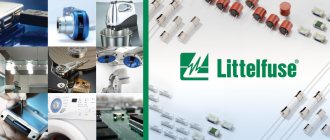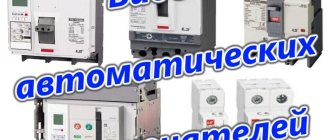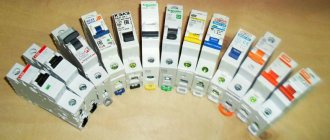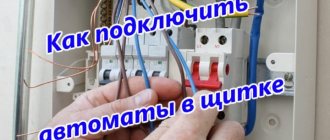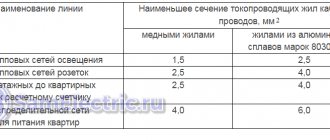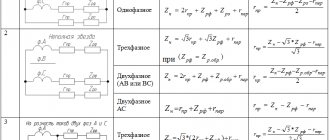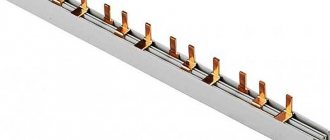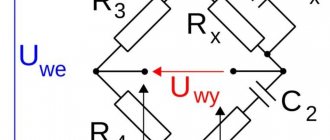In modern times, residents of high-rise buildings, holiday villages, private and cottage houses are faced with a classic problem - limiting the power of electricity . Solving this problem is quite problematic, since each resident is initially allocated a certain power, exceeding which leads to the breakout of the machine in the house and overloads on the entire line. What to do if you need to consume more electricity than the electricity you have installed?
You need to use our service - remaking the introductory machine to the denomination you need!
We have been remodeling introductory machines for a long time, we carry out the work reliably, efficiently and accurately! Visually, your machine will look the way it should according to all the documents, and inside we will install a new filling that will allow you to use electricity without restrictions and knocking out the machine.
Important information! A converted circuit breaker in no case leads to the theft of electricity; you pay exactly as much energy as you consumed according to established tariffs, but more than what was allocated to you by the management company.
Who needs converted circuit breakers?
Most often, circuit breakers of at least 25A are installed at the input. However, you can find houses that still have 16 amp circuit breakers. This means that they are able to withstand a load from electrical appliances of no more than 3.5 kW. By today's standards, given the large number of electrical appliances in the house, this is prohibitively small.
There are two ways to solve the problem: replace the circuit breakers with larger ones or remake them. The second method is prosecuted by law, but with the first, red tape often arises associated with calling electricians, unsealing the meter, etc.
ABB automatic machines: recommendations for selection and installation
Operating principle
The devices work the same way as all the others.
In case of overload, the electrical circuit is switched off when the bimetallic plate heats up. The response time depends on the amount of current passing. It should not exceed the established nominal value. For example, an ABB 25A automatic machine is triggered if the current exceeds the rated current by 27.5-37.5 A (1.1-1.5 times). In this case, the greater the excess, the faster the circuit will turn off. When a short circuit occurs on the line, the electromagnetic release is instantly triggered.
Depending on the power supply circuit, single- or three-phase ABB circuit breakers are installed at the input. If it is also necessary to disconnect the neutral wire, two- or four-terminal devices are used.
Features of ABB circuit breakers
ABB machines are high quality products from ABB. It was the first in the world to begin developing automatic switches and still maintains a leading position in their production. A high-quality device is distinguished by its ability to protect wiring from a short-circuit current of a given value and the precise compliance of the thermal release with the specified characteristics when protecting electrical circuits from overloads.
It is difficult for the average user to establish the accuracy of compliance with the standards of machines of certain brands. He can only choose products from trusted manufacturers, such as ABB.
Another important point is that the device has the correct characteristics, expressed by the dependence of the response time of the device on the current value. Standards EN 60898 and IEC 898 provide for the following excesses of operating currents Imax of the electromagnetic release over the rated In.
- Type B - lighting (Imax=3...5 In). Automatic machines are used in everyday life, where, with a long line length, a short circuit can cause the first operation of a thermal release rather than an electromagnetic one.
- Type C – electrical installations with moderate starting currents (Imax= 5…10 In). The devices find domestic and industrial applications where active and small inductive loads such as fluorescent lamps and motors of various devices operate.
- Type D – high starting currents and the presence of inductive loads: transformers, electric motors, welding equipment, etc. (Imax= 10…20 In).
The most common characteristic is C, which is suitable for lighting and many household appliances.
The correct choice of device depends on the maximum value of the short circuit current Is.c. in the line. For most circuits, a breaking capacity of 4.5 KA is sufficient. It is indicated in the specifications and on the body of the device.
To select the required device, it is advisable to consider the common ABB machines, the characteristics of which are given in the table.
Two purposes of ABB circuit breakers
Abb circuit breakers serve two purposes in an electrical circuit.
The first purpose is to interrupt (turn off) the electrical circuit in the event of an overload, that is, exceeding the calculated norms of electricity consumption. This excess is called overload and is accompanied by overload and a strong increase in the temperature of the electrical wiring. As a result, the insulation of electrical cables begins to melt and the possibility of fire begins.
The moment the circuit is disconnected from the power supply is called device operation .
In the circuit breaker, ABB solves the problem of automatic shutdown in case of overload, the thermal release of the circuit breaker. According to the mechanics of operation, shutdown occurs due to the heating of a biometal plate, which changes its shape when heated.
The process of transferring a device from emergency mode (shutdown) to operating mode is called platooning . ABB switches are charged mechanically using a lever (a small switch on the device body).
The second purpose of a circuit breaker is to break the power supply circuit when overcurrent occurs in the circuit. The main reason for the appearance of overcurrents is a short circuit in the circuit, an extremely dangerous emergency mode that threatens the lives of people and animals.
Short circuit protection is provided by an electromagnetic release installed in the circuit breaker. Charging the circuit breaker into the operating position is carried out after eliminating the malfunction, mechanically, using the same charging lever.
It is worth noting that ABB circuit breakers have a large reserve of emergency operations. The characteristics of the switch indicate how many times the device can operate without affecting functionality. For abb switches, the number of such shutdown/charging cycles is in the thousands and is indicated on the device body (4500, 6000, 10000).
Related articles: Plastic pipes in the apartment
Slot machine series
Devices of the S230R, S240 S250, S260 series are used in everyday life. In addition to protecting electrical circuits and equipment, ABB circuit breakers perform other important functions:
- application as switches and switches;
- high performance in terms of selectivity;
- the ability to use machines with accessories from your company and other manufacturers.
To make the right choice, you need to understand their labeling.
Application of single-pole circuit breakers S201P C
Modular circuit breakers S201P C, as a rule, have all possible designs according to the operating characteristics of circuit breakers, which indicates their wide application segment. They are usually used for surge protection by installing on a DIN rail in distribution boards, boxes located in residential buildings, offices, warehouses, and other industrial and commercial premises. S201 P C is used to protect circuits with active and inductive loads and low pulse current (providing electricity to apartments, offices, industrial facilities).
Marking
- The series number is indicated on the device body after the name of the concern - ABB. After the designation of the series, a symbol is placed in the form of a letter indicating the value of the maximum breaking capacity: L - 4.5 KA, M - 10 KA, P - 25 KA. For household electrical appliances and wiring, choose a maximum current of 4.5 KA and 6 KA. There is no need to use values higher than the maximum current.
- Automatic machines are produced with the number of poles from one to four. They are indicated by the last digit in the series number.
- Type of instantaneous tripping: B, C, D. After the letter there is the value of the rated current in amperes, for example, an ABB 16A type B circuit breaker is designated B 16.
- The magnitude of the operating voltage.
- Maximum breaking capacity in amperes.
- The pole switching diagram is applied in the form of a pattern with a relief on the bottom or side of the device.
How the introductory machines are redesigned
The editors of the site categorically do not recommend altering introductory machines. This action is punishable by law and is punishable by fines; below we will tell you what they are.
However, for the sake of familiarization, we will consider the main methods of remaking input circuit breakers:
The first method is to replace the characteristics on the front panel. Everything is simple here, and a 40A circuit breaker has characteristics identical to a 16 or 25A circuit breaker. The method is quite simple, but in fact very difficult to implement.
Method two - with this method, a machine with a small rating is mechanically disassembled and its internal elements are replaced from a circuit breaker of a higher rating. The 63A and 16A machines are almost identical inside, the difference lies only in the cross-section of the current-carrying plates, which open at the time of overloads and short circuits in the electrical network.
How switches are remade
There are two answers to the question of how to change the denomination of a machine.
The first method is to redraw the characteristics on the front panel. On a conventional circuit breaker, the inscriptions with technical characteristics are erased and new ones are applied. Thus, you will get a 16A housing, a 32A mechanism inside, or any other ratings. The advantage of this method is the relative cheapness of the converted products. Flaws:
- It is impossible, difficult or expensive to do it yourself.
- The quality of the newly applied paint may be worse than the original. As a result, the inscription with the new denomination may fade or disappear altogether, and during a visual inspection the inspector can determine the replacement.
The second option is reassembly or repacking with the installation of a more powerful mechanism in a housing from a circuit breaker of a lower rating.
What happens is this: they take 2 machines with a rated current of 63A and 25A (or any other required ratings), and disassemble them. Each circuit breaker consists of two halves connected by metal tubes (brass, for example). These tubes are flared on both sides, due to this the body is kept assembled.
After disassembly, the mechanism 63A is installed in the housing 25A and reassembled. The main and only advantage of such a modification is the “original” inscriptions on the cases. And the disadvantages are:
- Modern circuit breakers are non-removable. As mentioned, they are assembled using flared tubes. This means that there is no guarantee that the halves of the converted circuit breaker will be assembled back using metal tubes followed by flaring.
- In some cases, the body halves are glued together, and the tubes are cut and also glued into the seats. After which they do not work as fasteners, since they do not bear mechanical load.
- There is no guarantee that the product has been altered at all (this also applies to the first method) and you were not sold an ordinary machine at the price of the altered one (it can be 3-5 times higher).
It is important to note that converted circuit breakers are available on the market from all popular manufacturers: Legrand, Schneider, ABB, TDM, EKF, IEK and others.
Fines and consequences for using converted machines
Let’s not be verbose and just say that if you use converted circuit breakers at the input, you may be charged under Article 7.19 (“Unauthorized connection and use of electrical energy”).
If the power grid proves your guilt, and this is exactly what will happen, then you will face a fine of 2,000 to 200,000 Russian rubles. In addition, we must not forget about other risks associated with altering introductory machines.
First of all, these are possible loads that neither the input cable nor the electrical wiring can handle. In this case, the circuit breaker will not work, which will lead to a fire in the protective sheath of the conductors.
